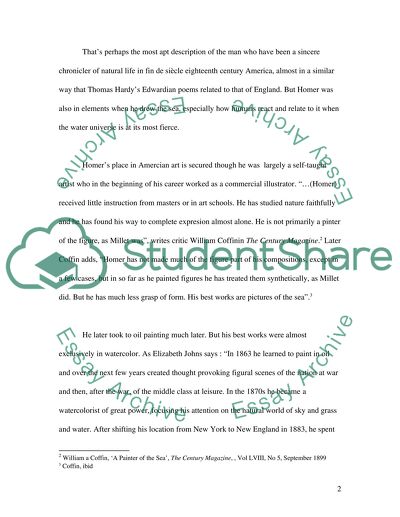Cite this document
(“Winslow Homer and his Eight bells Essay Example | Topics and Well Written Essays - 2000 words”, n.d.)
Retrieved from https://studentshare.org/visual-arts-film-studies/1545991-winslow-homer-and-his-eight-bells
Retrieved from https://studentshare.org/visual-arts-film-studies/1545991-winslow-homer-and-his-eight-bells
(Winslow Homer and His Eight Bells Essay Example | Topics and Well Written Essays - 2000 Words)
https://studentshare.org/visual-arts-film-studies/1545991-winslow-homer-and-his-eight-bells.
https://studentshare.org/visual-arts-film-studies/1545991-winslow-homer-and-his-eight-bells.
“Winslow Homer and His Eight Bells Essay Example | Topics and Well Written Essays - 2000 Words”, n.d. https://studentshare.org/visual-arts-film-studies/1545991-winslow-homer-and-his-eight-bells.


